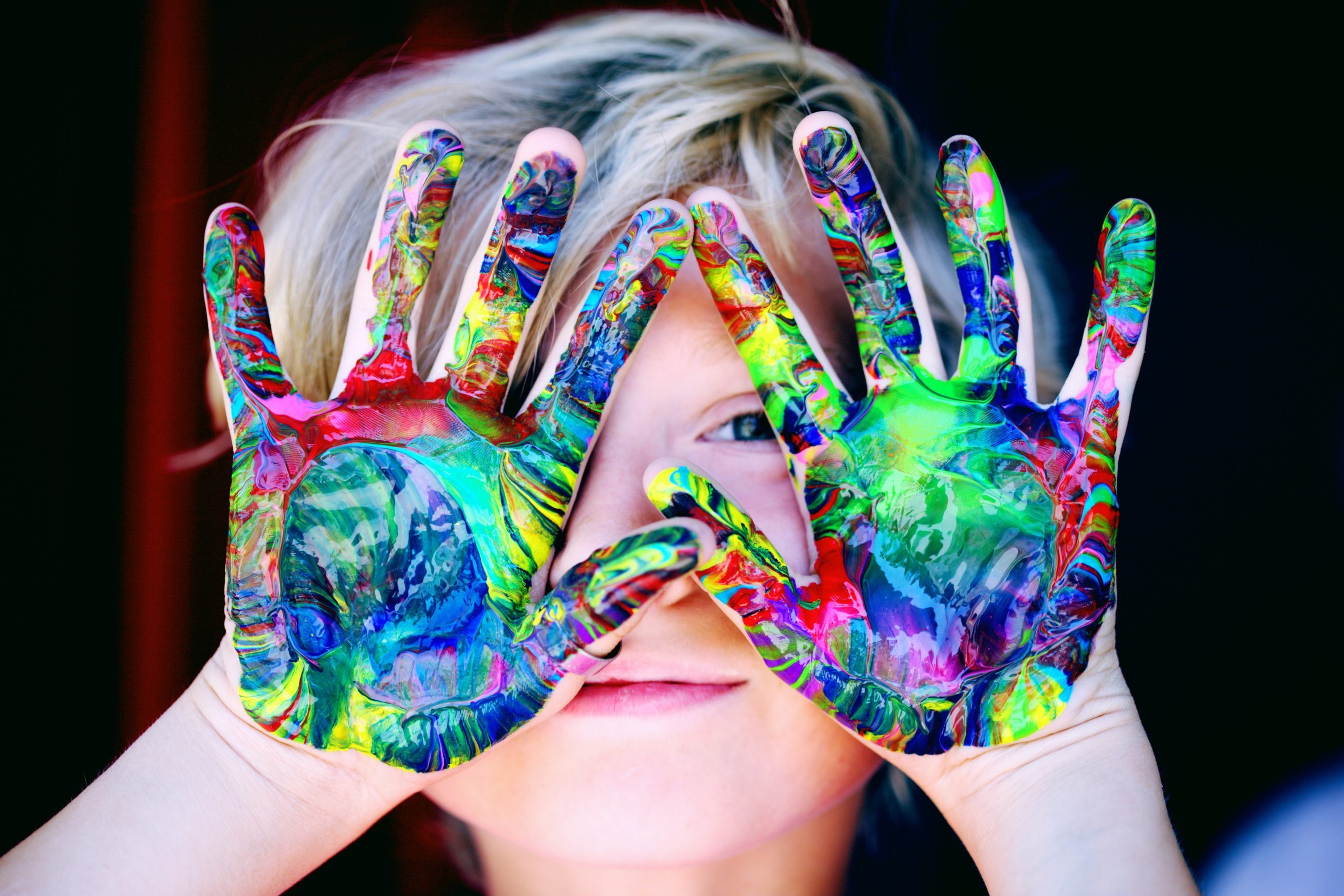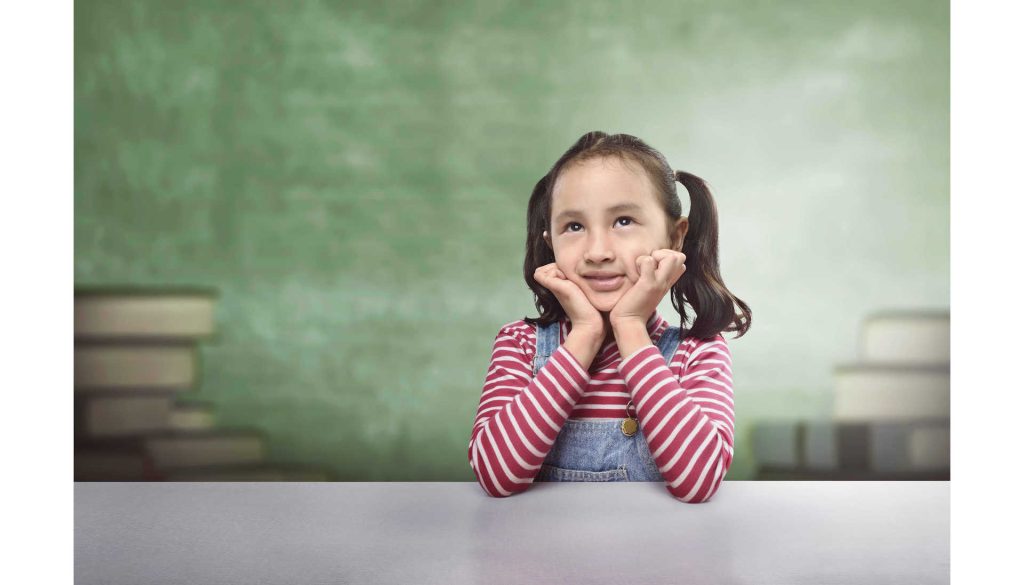How to teach creativity to kids is a challenge faced by teachers and parents daily. Is it possible? Yes, it is, but what gets in the way?
Every child is an artist. The problem is how to remain an artist once we grow up.
Pablo Picasso
Watching a little person’s face as they draw is wonderful. Forehead creased with concentration, tongue peeking out and no hesitation in the confident strokes of their crayons. And then the excitement at the great reveal, “Look Mum. Look what I drawed!”
As parents and teachers, we know how important creativity is. Yet, we tend to rob our kids of this joy. As little people, they imagine and explore fresh ideas and worlds, but we are frightened by nonconformity and so work to make them ‘normal’. We tell them to colour the grass green and the sky blue. Our version of normal is ‘adult’. So, we end up with lots of conforming little adults.
Having done that, we then expect them to make their creativity reappear at school in subjects such as Drama, Art and Dance. We also have to reteach creative thinking across the curriculum. It’s absurd.
Stages of Creativity
Creativity is one of the essential parts of deep learning. There are elements of creativity that we must develop in students until creativity again becomes part of their mindset. These stages are:
Imagining
Imagining is accessing that child side of us that thought anything was possible. That means removing the fear of judgement and limitations.
Creating
Imagining is accessing that child side of us that thought anything was possible. That means removing the fear of judgement and limitations
Innovating
Imagining is accessing that child side of us that thought anything was possible. That means removing the fear of judgement and limitations
 SOME OF THE BARRIERS TO CREATIVITY IN SCHOOLS
SOME OF THE BARRIERS TO CREATIVITY IN SCHOOLS
TEACHERS
1. Understanding of creativity
Studies show teachers have widely varying understandings of creativity and their understanding is often incomplete. The silver lining is that professional development is shown to have a strong impact on teachers’ attitudes. (Mullet et al)
2. Bravery
Teachers fear teaching creativity won’t work and it will reflect badly on them and the school. Parents may, and do, question what is going on and why it is different from what has been happening for generations. Will the kids still hit the almighty, government-prescribed benchmarks?
Teachers also fear not being the expert in the room. They have to give up control if they are to allow creativity. Difficult. Remember, teachers grew up with that traditional model of education, just like parents.
3. Skills
Teachers may justly ask, “What is creativity and how do you teach it? How do you assess it? How do you compare different forms of creativity?” Teachers aren’t taught the skills of creativity, it is just assumed that they know them.
4. Time
Being creative takes time. It doesn’t fit nicely into standard hour-long school lessons. We have a curriculum that is mandated and there are already so many interruptions and out-of-class time spent on non-core business.
That said, it is a good excuse to hide behind. In early and middle years of education, there are plenty of opportunities to take kids off the timetable and do amazing things with them.
STUDENTS
Kids are used to strict boundaries and scaffolding. If you give them the freedom and time to be creative sometimes they don’t cope. It’s a bit like opening the door to a birdcage and the bird stays still. Some kids embrace the opportunity and blossom. Some freeze. Being creative takes confidence and bravery. It also requires that students are not limited by a fear of failure.
According to the work of Bryan Greetham (2016), the ten characteristics we need to cultivate in kids to enable them to be creative thinkers are:
- The ability to declutter the mind
- The skills to design solutions rather than just finding them
- Naïve, childlike thinking that takes nothing for granted
- The ability to find good problems
- The skills to look for causes, effects, and possible solutions
- Openness to new ideas
- The ability to suspend judgement
- Determination and resourcefulness
- Courage in their thinking
- Optimism
PARENTS
Even if children’s creative talent varies. It is a skill like any other that can be practised and improved. Parents need to let kids know that and provide environments that allow creativity.
We reinforce the erroneous belief that creativity is purely innate when we say to kids, “Don’t worry, I’m not creative either”. We also support this false assumption when we assign creativity to a gender. There is a perception that creativity is a feminine trait. That’s untrue.
How to teach creativity by working together
Developing creative thinking skills in our kids is an area where parents and teachers can work together for great outcomes. Some of the ways we can do that:
- Ask great, ‘why’ and ‘how’ questions
- Have a solutions-based approach to problems. I like the idea of a 20/80 approach. You can spend 20% of your time talking about a problem, but 80% on developing solutions
- Create an environment that is non-judgemental but challenging
- Promote mindfulness to clear the mind and create room for creativity
Finally…
For schools to be creative environments they must have leadership that encourages, facilitates, and fosters creativity. There must also be a deep concern for students as people first. That means, despite the pressures, not having testing and benchmarks front of mind.
This all emanates from a culture of trust. We all need to trust teachers to be professional and give them the training and license to be creative in their programs. If we want to foster creativity, schools need to model that behaviour for kids.










